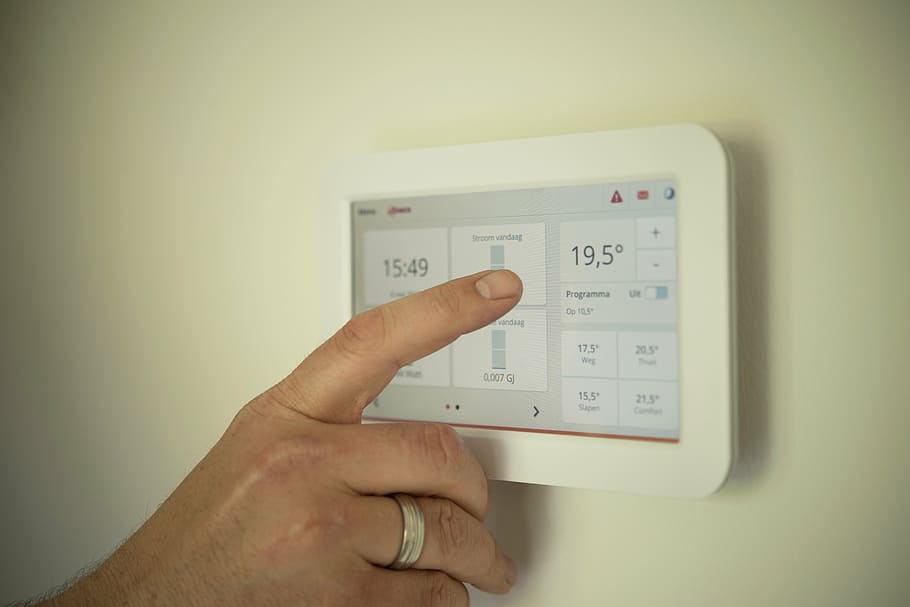After reading this blog please feel free to call All Around Heating And Air in Long Beach Ca, for any questions or concerns pertaining to your air conditioning and heating system.
Table of Contents
Thermostats
Turn it down. As a homeowner, leaving the temperature inside your home constant day and night will most likely cost you money. It’s more economical to turn the heat down when no one is home, or at night when you’re asleep. And if your home has a setback thermostat, you’ve got a simple way to do just that. Used properly, that little box hanging on your wall will save you energy — and energy dollars.
New houses in California with a central heating and cooling system must come with an automatic setback thermostat. If you have an older home that doesn’t have one, you can usually replace your existing wall thermostat with a setback model very easily.

Savings with a setback thermostat can be impressive. Recent studies show that properly using your automatic thermostat could cut your heating costs from 20 to 75 percent. In summer, such devices may shave your cooling costs by 15 to 25 percent. (Your actual savings, of course, will depend on such factors as the climate in which you live, the amount of insulation in your house, the temperature you set your thermostat, and the rate structure of your utility company. Not every home is alike!)
Buying Smart
Automatic setback thermostats come in many varieties and models. They all regulate your heating and cooling system to provide comfort when you decide you need it.
Most setback thermostats allow you to program at least one “at home and away from home” schedule for the weekdays and a different one for the weekend. Other models may feature full seven-day programming, enabling you to customize the operation of your heating and cooling system for any day of the week.
Some brands will start your furnace or air conditioner at the time you specify, while others reach the temperature you want at the time you want, meaning that heating or cooling will begin sooner than the time you programmed into the unit.
Setback thermostats may also come with a variety of helpful “extras” such as:
- A light to remind you when to change the furnace filter.
- A keypad lock to prevent small children from accidentally (or mischievously) changing the thermostat programming.
- Automatic changeovers with the season, eliminating the need for you to flick a switch when your comfort needs change from the heating to the cooling.
- Lighted displays that glow at night, a convenience in dark hallways.
- “Armchair” programming that allows you to detach the thermostat from its base and enter your schedules from the comfort of a chair, instead of requiring you to stand in the hall, at the unit.
- A low battery warning indicator. (Batteries keep the internal clock ticking and preserve the programmed schedules during a power outage.)
- Many thermostats have daily schedules already built in, requiring you to change only those days that don’t reflect your personal lifestyle. Most models also allow you to override the programming when your schedule changes. To save additional energy, you may want to manually turn the thermostat off when you are on vacation.
- If programming the setback thermostat you have in your home is confusing to you, look for simplified instructions, often found inside the thermostat cover. Many manufacturers also offer toll-free customer assistance.
- It’s Your Money
- All setback thermostats will automatically start and stop your heating or cooling system at least twice over a 24-hour period.
- Here’s the typical way to operate your automatic thermostat properly in the winter:
- Program it to lower the temperature at night after you’ve gone to bed.
- Have it start the heating system again in the morning, raising the temperature just before you get up.
- Let it shut off the system again during the day if no one is home.
- Set it to start up just before you return home in the evening. You’ll use less energy than if you run your system all day long.
- For winter operations, consider setting the thermostat to 55 degrees at night when you sleep and at 68 degrees when you’re home. (In colder parts of California, it’s not recommended to set the temperature below 50 degrees, because indoor water pipes may freeze.)
- For summer operations, set the temperature to 78 degrees when you’re home and at 85 degrees or higher when the house is unoccupied. In the summer season, you might need to program your thermostat to cool only for one period of the day, such as the late afternoon and evening hours, when the family returns home.
Exceptions to the use of setback thermostats
A special note for heat pump and radiant heating system owners If your house has a heat pump system, look at the manufacturer’s specifications before considering a programmable thermostat. Most makers of heat pumps offer setback thermostats specifically designed for their units. An improperly used or mismatched setback device can actually increase the cost of operating your heat pump!
Radiant heating systems run heated water through tubes under the flooring to deliver heat. For homes with radiant heating, setting back the temperature for short periods — such as overnight or during the day when you’re away — is inefficient.
Radiant heating systems are becoming more common. They are a good idea for energy efficiency, and they can use solar power to heat your home.
Call All Around Heating And Air in Long Beach, Ca. for all your heating and air conditioning needs. http://allaroundheatingandair.com


